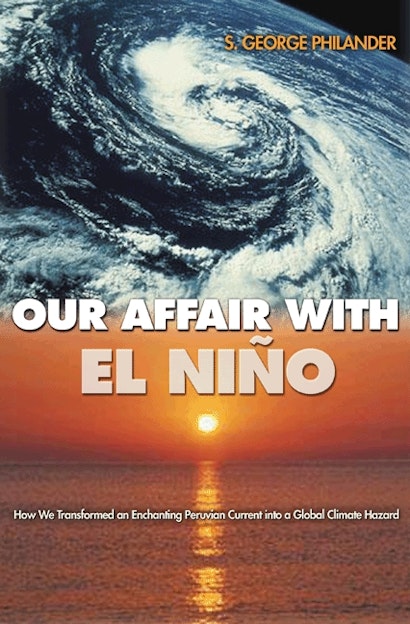Our Affair with El Niño: How We Transformed an Enchanting Peruvian Current into a Global Climate Hazard


Paperback
- Price:
- $44.00/£35.00
- ISBN:
- Published:
- May 7, 2006
- Copyright:
- 2004
- Pages:
- 288
- Size:
- 6 x 9.25 in.
- 20 line illus. 1 halftone. 3 tables.
- Main_subject:
- Earth Science
ebook
Until 1997, few people had heard of the seasonal current that Peruvians nicknamed El Niño. But when meteorologists linked it to devastating floods in California, severe droughts in Indonesia, and strange weather everywhere, its name became entrenched in the common parlance faster than a typhoon making landfall. Bumper stickers appeared bearing the phrase “Don’t blame me; blame El Niño.” Stockbrokers muttered “El Niño” when the market became erratic.
What’s behind this fascinating natural phenomenon, and how did our perceptions of it change? In this captivating book, renowned oceanographer George Philander engages readers in lucid and stimulating discussions of the scientific, political, economic and cultural developments that shaped our perceptions of this force of nature.
The book begins by outlining the history of El Niño, an innocuous current that appears off the coast of Peru around Christmastime—its name refers to the Child Jesus—and originally was welcomed as a blessing. It goes on to explore how our perceptions of El Niño were transformed, not because the phenomenon changed, but because we did. Philander argues persuasively that familiarity with the different facets of our affair with El Niño—our wealth of experience in dealing with natural hazards such as severe storms and prolonged droughts—can help us cope with an urgent and controversial environmental problem of our own making—global warming.
Intellectually invigorating and a joy to read, Our Affair with El Niño is an important contribution to the debate about the relationship between scientific knowledge and public affairs.